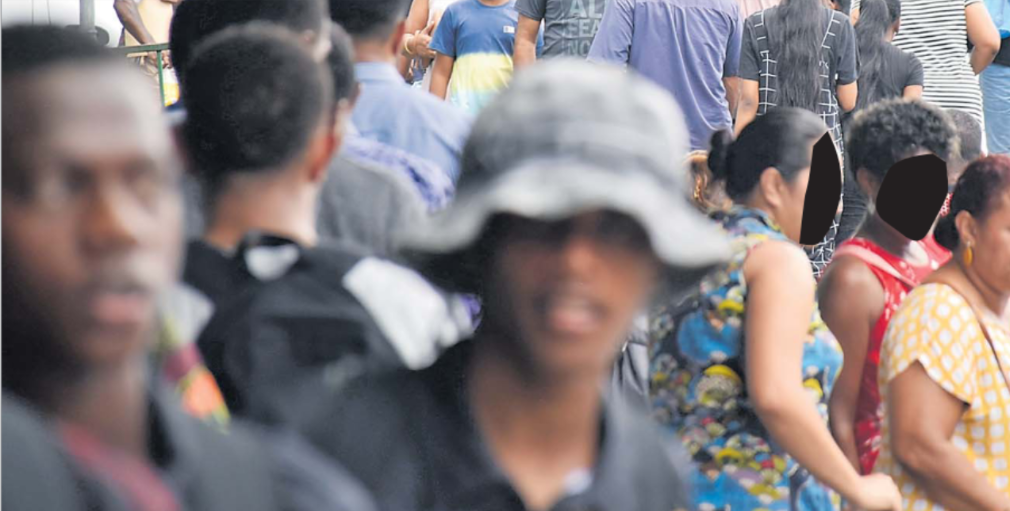NEARLY one in four Fijian youths are not in education, employment or training, the 2023–2024 Employment and Unemployment Survey has found.
Preliminary figures from the Fiji Bureau of Statistics (FBoS) reveal that 23.7 per cent of Fijian youths aged 15 to 24 are not in education, employment, or training (NEET).
Out of a youth population of 122,784, some 29,056 fall into the NEET category.
The survey also shows youth unemployment stands at 18.3 per cent.
“The proportion of young individuals (aged 15-24 years) who are not engaged in employment, education, or training (NEET rate) serves as an indicator for Sustainable Development Goal 8, which aims to promote sustained, inclusive, and sustainable economic growth, full and productive employment, and decent work for all,” states FBoS.
It adds this measure offers valuable insights into the segment of youth lacking the skills necessary for their first employment opportunity and can be considered an important metric for target.
“Generally, the likelihood of youth being classified as NEET is associated with lower levels of educational attainment and limited information-processing skills, such as deficiencies in literacy and numeracy.”
40-44 age group lead workforce – survey
THE 2023–2024 Employment and Unemployment Survey has found the five-year age group 40-44 had the highest number of persons in Fiji’s labour force.
Workers at a construction site in Suva. The 2023–2024 Employment and Unemployment Survey has found the five year age group 40-44 had the highest number of persons in Fiji’s labour force.
Preliminary figures from the Fiji Bureau of Statistics (FBoS) reveal 43,975 Fijians between 40-44 are working in Fiji, followed closely by the age groups 35-39 (43,363) and 30-34 (40,605).
The youngest cohort, aged 15-19, shows the lowest participation with 6526 individuals working.
Numbers surge to 29,430 for the 20-24 group, marking the transition into the workforce.
Peak participation is observed between 25-29 and 45-49, with figures climbing from 39,870 to a high of 43,975 in the 40-44 age bracket, reflecting the prime working age.
The FBoS data shows a decline beginning with the 50-54 age group at 29,087, dropping steadily to 10,679 for those 65+, suggesting a trend towards retirement.
There is a striking pattern in workforce employment across age groups found in the survey.
FBoS found employment starts modestly with 5123 individuals in the 15-19 age group, rising sharply to 24,251 for those aged 20-24.
The numbers peak in the 40-44 bracket at 42,276 Fijians in employment, with strong contributions from 35-39 (41,834) and 45-49 (35,679), showcasing the strength of the middleaged workforce.
A gradual decline follows, with 28,486 Fijians in the 50-54 age group who are working and dropping to 10,507 for those 65 plus.
Labour force gaps revealed
THE 2023–2024 Employment and Unemployment Survey has found outside labour force affects the youngest and oldest in Fiji.
Outside labour is defined as populations outside the labour force, those that are not employed, not looking and not available to work.
Preliminary figures from the Fiji Bureau of Statistics (FBoS) reveal the 15-19 age group tops the list with 60,810 individuals outside the labour force, likely due to education qualifications.
This is followed by a significant drop to 26,018 for the 20-24 group.
Participation remains relatively stable through middle ages, ranging from 19,635 (25-29 years) to 17,608 (50-54 year), before rising again to 53,563 for those 65+, reflecting retirement.
Unemployment at 5.7%
THE 2023–2024 Employment and Unemployment Survey has found Fiji’s unemployment rate stood at 5.7 per cent for 2023–2024.
This was a slight increase from 5.5 per cent recorded in the 2015– 2016 survey, according to preliminary findings from the Fiji Bureau of Statistics (FBoS).
The survey estimates that Fiji has a population of 614,832 people aged 15 and above. Of these, 314,898 are in the labour force.
The survey found there were 205,424 men and 109,474 women in the work force.
The national labour force participation rate is 51.2 per cent, with a notable gender gap.
“While 65.7 per cent of men are part of the labour force, only 36.2 per cent of women are working,” said FBoS.
Employment breakdown shows that 187,906 people work for someone else, 44,009 operate in other kinds of businesses, 50,902 work in their own family business selling most of the products or services, 8647 take on any available work to generate income, 3162 help a family member with a paid job or business, and 2199 are employed but temporarily absent.
FBoS says the full report will offer a deeper analysis of employment trends, gender disparities, and workforce distribution across sectors.

